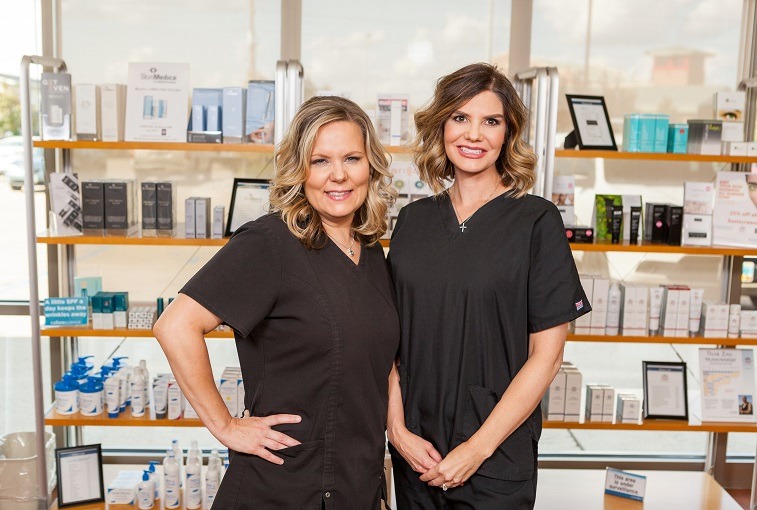
By Bekki Hill, R.N., C.A.N.S., and Natalie Hazelton, L.P.N., C.A.C.
The most noticeable signs of aging are the ones that happen on your skin. That’s why many women turn to cosmetic dermatology to better preserve and enhance their natural features as they age. Cosmetic dermatologists and other cosmetic specialists use a wide variety of medical and surgical treatments to keep skin looking youthful and slow down the signs of aging.
It’s essential to create a solid foundation for healthy, younger looking skin with a daily skincare regimen that cleans, exfoliates and hydrates, but learning more about cosmetic treatments can help you decide if a specialized procedure could also be right for you.
Laser and light treatments
Laser and light treatments can be used to treat a variety of skin concerns from unwanted hair, acne, fine lines, hyperpigmentation or sun damage to vitiligo, psoriasis or tattoos. During this type of treatment, specific wavelengths of light interact with tissue to help target specific skin concerns.
Botox® and dermal fillers
Injectables like Botox or dermal fillers help to temporarily soften fine lines and wrinkles. Botox lasts for three to four months by reducing the activity of muscles that cause wrinkles. Dermal fillers can last from six months up to two years, depending on the specific type of filler. Fillers, like Juvederm® and Restylane®, are used for moderate to severe wrinkles, volume loss or plumping.
Microdermabrasion
Microdermabrasion is a type of skin rejuvenation that’s used to treat acne scarring, discoloration, hyperpigmentation or fine lines. A minimally abrasive instrument is used to gently exfoliate the skin, removing the uneven outer layer. These treatments are best if performed in a series with treatments about two to four weeks apart, with maintenance every three to four months after that.
Chemical peels
A chemical peel is another way to prompt skin regeneration and improve acne scarring, sagging skin, discoloration, hyperpigmentation, wrinkles or fine lines. The chemical solution applied to your skin causes it to exfoliate and peel off, revealing a smoother, more vibrant layer of new skin.
There is usually little to no discomfort with these cosmetic procedures. We use topical anesthesia, a skin cooling system or ice packs to minimize discomfort. Recovery time can range from a few hours to several days, depending on the procedure.
There are always risks with cosmetic procedures, so it’s important to be treated by an experienced professional under the supervision of a dermatologist. Rarely, patients can experience skin reactions, pigment changes, blistering, bruising, infections or scarring. Make sure to discuss in detail the benefits, expectations, risks and any post-procedure care with your dermatologist before your procedure.
Bekki Hill, R.N., C.A.N.S., is an aesthetic nurse specialist with extensive training in cosmetic injections and specializes in Botox, Dysport®, Juvederm, Voluma and Restylane treatments. She is a certified as an aesthetic nurse specialist through the Plastic Surgical Nursing Certification Board for demonstrated clinical expertise and for providing quality, evidenced-based clinical care.
Natalie Hazelton, L.P.N., C.A.C., is a licensed practical nurse and medical aesthetician with extensive experience in both fields, and specializes in laser hair removal and superficial laser resurfacing. She is also a certified aesthetic consultant and medical aesthetician.
Share
Tweet
Share
Share
…
Posted In Dermatology, Health Information, Women's
SHN Staff
Sanford Health News is your site for health news from the experts at Sanford Health. SHN staff is a team of Midwest-Emmy-winning journalists bringing you trustworthy information on healthy living, health care, scientific research, health conditions and medical innovation.






































